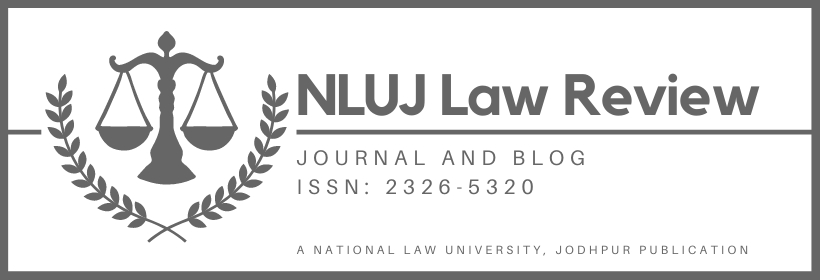Introduction
On 9th February 2022, the Directorate General of Foreign Trade of the Ministry of Commerce & Industry notified the prohibition of drones for import. The notification stipulates a complete ban on drones except when imported for Research & Development, Security and Defence or by educational institutions & government entities. Additionally, the ban would not apply in cases where components of drones are imported. It has been theorised that this step is being made to bolster India’s domestic manufacturing sector and increase domestic drone production. Amidst the global pandemic, there has been an immediate need to diversify supply chains; thus, the government affirms that the ban is beneficial for the sunrise drone industries. The other rationale is the fact that most drones are imported from China and that it uses the same to relay sensitive information to Chinese agencies that are information related to critical infrastructure and personal information.
The over-arching contention, however, remains that India being a signatory to GATT 1947 and TRIMs, such a decision might seem unjustified in lieu of its commitment to free trade. The ban would be violating multiple Articles stipulated under GATT and TRIMs. Article III:4 of GATT elucidates the ‘national treatment principle’, according to which, no less favourable treatment can be accorded to products of any other party to GATT as has been accorded to like domestic products. Similarly, Article 2 of TRIMs stipulates that no trade-related measure shall contradict Article III of GATT. The decision seemingly takes a biased stance against the receiving country thereby violating the principle. Through the article, the author intends to analyze the two defences taken by India to justify the drone ban and delves into the ramifications of the same.
The Conundrum
Local Short Supply
A complete ban on the import of drones to amplify domestic production of drones is definitely in derogation of the national treatment principle. But there are certain exceptions to the aforementioned principle. Article XX(j) of GATT allows countries to take necessary measures “essential to the acquisition or distribution of products in general or local short supply.”India could justify its stance and ascertain that there is a local short supply of drones and hence, the measure was necessary. A certain precedent, however, might hinder this argument.
In a recent dispute between India and USA before the WTO DSP (World Trade Organization Dispute Resolution Panel) relating to Solar Cells, India, for the first time ever invoked the exception under Article XX(j). The matter was pertaining to a government initiative that required the government to buy solar energy from producers with a pre-requisite that producers must use a certain percentage of Indian(domestic) solar cells in their production. USA alleged that such mandates were against GATT. Interpreting Article XX(j) in this case, the WTO DSP held that this exception can only be adopted when the quantity of available product supply from all sources is unable to meet the demand within the relevant geographical area or market. However, in this case, the Panel rejected India’s justification of the violations under Article XX(j) of GATT.
When such a shortage becomes evident, governments can take measures that support national preferential treatment in order to improve domestic production. Low domestic production and the need to amplify supply chains merely by governmental standards cannot be used as reasons to derogate from the national treatment principle. A government cannot arbitrarily resort to a ban on imports by simply stating that domestic supply needs to be improved. The Body then went on to explain that before claiming that there is a scarcity in domestic production, all possible sources of the product (including imports) have to be assessed to substantiate that there is a low supply. Low supply will also have to be juxtaposed with excess demand to defy the national treatment principle. Unfortunately, in several instances, the Government has emphasised the fact that the ban on imported drones is primarily to improve domestic production, without showcasing the demand side of drones. If the government’s rationale is to be justified, there is a much larger burden of proof on India.
National Security
The other exception that can be claimed by India is ‘essential national security interests’, in view of which, the national treatment principle can be truncated. This has been provisioned under Article XXI(b) of GATT. The security exceptions are designed as self-declaratory measures to protect a country’s security interests across international trades, tariffs and agreements. It has often been considered as “the exception of exceptions” and the Article helps countries to resort to decisions that it deems fit to protect their security interests, only subject to review by a Dispute Settlement Body of the WTO.
The 2014 Crimean invasion is an example worth noting. A dispute arose when Russia decided to ban imports from Ukraine and other neighbouring countries. Many believed that such a move by Russia was a violation of Article V and Article X of GATT. Russia then invoked the ‘security interests’ exception under Article XXI(b)(iii) and claimed that it was a necessary move resorted to in the wake of an international emergency. Fortunately for Russia, the Body also concluded that Russia was objective in its decision and that the Crimean invasion was a skirmish, very close to a full-fledged war. Hence, Russia’s stance was acceptable. The Body further opined that there is no single ground or context to invoke the ‘security interest’ exception and that each situation is distinct and must be scrutinised, circumstantially.
Parallels with China
A similar parallel can be drawn with India’s long-drawn hostility with its neighbouring country, China over most of its borders surrounding the regions of Jammu, Kashmir, Ladakh and the state of Arunachal Pradesh. Tension fluctuates across the ever-sensitive Line of Actual Control and in particular, the Aksai Chin region, which has witnessed multiple deployments of armoury including drones and vehicles. According to a report submitted by the Centre for Security and Emerging Technology (CSET), the People’s Liberation Army (PLA) has made extraordinary progress with its AI systems and military drones which can be used in modern combat against hostile nations. Such drones contain critical components which can supposedly be used as a gateway to relay and transmit information to the PLA. This allegation of Chinese drones breaching foreign data using their high-tech software was recently observed in 2020 when the Department of Homeland Security (DHS) warned the US Government about the same.
According to several allegations, ordinary commercial Chinese drones such as DJI drones, can breach foreign data and directly transmit the same to the PLA, aiding its strategic moves against its enemy nations. This could pose an immense threat to India and fuel the existing hostility between India and China. This is one such scenario of a possible security threat to India which has been anticipated. One must also remember that Chinese drones and their components are exported throughout the world, and India fears that drones from other countries may also possess Chinese corollaries that may threaten India’s security and integrity.
Analysis
India can justify its import ban on drones using the ‘essential security interest’ exceptions laid down under Article XXI(b). However, while comparing India’s drone ban with the Russian move during the Crimean conflict, we must remember that India cannot completely rely on that precedent as Russia was then faced with a war-like situation, a palpable circumstance of an emergency thoroughly justifiable under Article XXI(b)(iii). The same may or may not be true for India as the Chinese threat is only a possible threat at best and protectionism has been sought by India in anticipation of a threat. Sadly, India hasn’t had a very great relationship with protectionism. In the 1990s, with a protectionist economy, India ran out of foreign exchange reserves and went hat in hand to the International Monetary Fund (IMF) in 1991. This prompted much-needed economic reforms that gradually liberalized the economy and encouraged foreign trade and investment. India cannot now go back to that experience.
Further, India can only wield the exception under Article XXI(b)(ii) if it evidentially proves that there is a threat to ‘essential security interests’ caused by information and data being used ‘directly or indirectly for the purpose of supplying a military establishment’. In any case, the burden of proof is immense. The other primal point to consider is the fact that the new policy almost remains silent on India’s intention toward the export of these domestically manufactured drones.
Conclusion
From an international law perspective, India’s move on banning the import of drones is controversial and may bring retaliatory responses from other countries. When India banned Chinese apps, India did see an immense threat of retaliation from China. Similar responses must be expected with the drone ban as well. More important is the fact that India is at its nascent stage in the drone manufacturing precinct and will require international assistance in developing this sunrise industry.
The research and development and defence exceptions are not enough to masquerade the fundamental intention of the policy which is to ban the import of all commercial drones. India needs to remove this blatant ban and come up with more efficacious internal policies to promote the domestic drone industry. Upskilling the workforce, and encouraging drone start-ups through subsidies and other government measures, are better steps in boosting the domestic economy, rather than resorting to a ban. Stronger public infrastructure must be put in place to combat security threats. In the presence of alternative means such as these, a ban does not become an immediate solution. Using other means to resolve this issue will hold good for India’s relationship with other countries and for the long-term growth of the market.
This article is authored by Himali Judith Sylvester and D Tharun Gautham Rao, students of St Joseph’s College of Law, Bengaluru.


